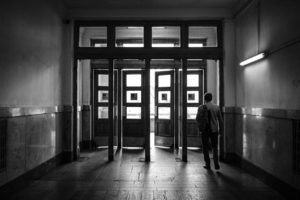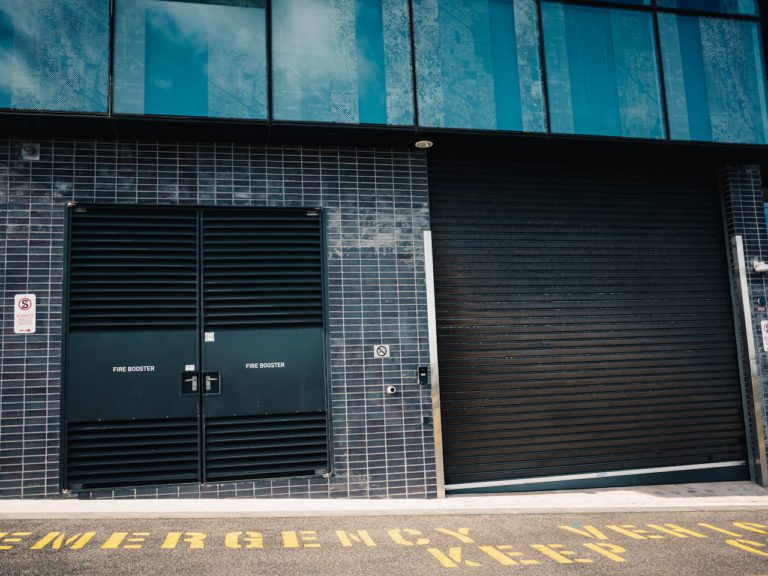In the realm of fire safety and building protection, integrating fire-rated glazing with fire doors represents a significant advancement in safeguarding occupants and property against the devastating effects of fires. Fire-rated glazing, also known as fire-resistant glass, offers transparent protection by withstanding the intense heat and flames of fire while maintaining visibility and allowing natural light to penetrate interior spaces. This innovative solution provides comprehensive fire protection coverage while enhancing aesthetics and functionality when combined with fire doors, which serve as critical barriers to prevent the spread of fire and smoke.
Understanding Fire-Rated Glazing
Fire-rated glazing is specially engineered to resist the passage of fire and smoke for a specified period, allowing occupants valuable time to evacuate safely and emergency responders to contain the blaze. Unlike traditional glass shatters and fails under high temperatures, fire-rated glazing is constructed with multiple layers of tempered or laminated glass, interspersed with fire-resistant interlayers. These interlayers are designed to expand and form a barrier when exposed to heat, effectively blocking the passage of flames and smoke. Depending on the specific application and regulatory requirements, fire-rated glazing is available in various fire resistance ratings, ranging from 20 minutes to 3 hours.
The Role of Fire Doors
Fire doors are essential components of passive fire protection systems, serving as critical barriers that compartmentalize fire hazards and limit their spread within a building. Constructed from fire-resistant materials such as steel, gypsum, or composite cores, fire doors are equipped with intumescent seals and automatic closing mechanisms that activate in response to heat, forming a tight seal to prevent the ingress of flames and smoke.
Enhancing Fire Safety Through Integration
When integrated with fire doors, fire-rated glazing creates a synergistic solution that enhances fire safety while preserving aesthetics and functionality. By incorporating fire-rated glazing into door assemblies, architects and designers can maintain visibility and openness between spaces while meeting fire code requirements for fire resistance. This transparent protection allows occupants to monitor fire conditions visually and facilitates communication and wayfinding during emergencies. Additionally, fire-rated glazing in fire door assemblies maximizes natural light penetration, creating brighter and more inviting interior environments while reducing reliance on artificial lighting.
Regulatory Compliance and Certification
Adherence to regulatory standards and certification requirements is paramount for fire-rated glazing and doors to effectively fulfil their role in fire protection. These standards, established by organizations such as the National Fire Protection Association (NFPA) and Underwriters Laboratories (UL), specify criteria for performance, durability, and fire resistance ratings. Fire-rated glazing and doors must undergo rigorous testing to evaluate their ability to withstand fire exposure and comply with applicable building codes and regulations. By selecting certified products and ensuring proper installation by qualified professionals, building owners can have confidence in the reliability and effectiveness of their fire protection measures.
Resistant materials are equipped with seals and intumescent strips that expand when exposed to heat, creating a tight seal that blocks the passage of flames and smoke. Installed at strategic locations such as stairwells, corridors, and fire exits, fire doors compartmentalize fire hazards, allowing occupants to safely evacuate while delaying the spread of fire to other building areas. When combined with fire-rated glazing, fire doors provide enhanced visibility and wayfinding, helping occupants navigate safely through smoke-filled environments and facilitating timely evacuation efforts.

One of the critical advantages of fire-rated glazing is its ability to preserve the aesthetic and functional integrity of interior spaces while providing essential fire protection. Unlike solid fire barriers or opaque materials, fire-rated glazing allows natural light to filter into rooms, creating bright and inviting environments that enhance productivity and well-being. This transparency also fosters a sense of openness and connectivity within buildings, promoting collaboration and interaction among occupants. By integrating fire-rated glazing into building design, architects and designers can balance safety and aesthetics, ensuring that fire protection measures enhance rather than detract from the overall environment.
In addition to its aesthetic benefits, fire-rated glazing offers practical advantages in terms of functionality and versatility. Depending on the specific requirements of a building or occupancy type, fire-rated glazing can be customized to meet various performance criteria, including fire resistance ratings, impact resistance, and sound attenuation properties. This versatility allows architects and designers to specify fire-rated glazing solutions that address specific safety and performance needs, whether protecting egress routes in a high-rise office building or enhancing privacy in a healthcare facility.
Moreover, advances in fire-rated glazing technology have led to innovative products that offer enhanced performance and functionality. Modern fire-rated glazing systems incorporate thermal insulation, solar control coatings, and self-cleaning properties, providing additional benefits beyond fire protection. These advanced glazing solutions contribute to energy efficiency, occupant comfort, and sustainability, making them ideal choices for green building projects and environmentally conscious design initiatives.
In conclusion, fire-rated glazing and fire doors are essential components of adequate fire protection systems that enhance safety, security, and functionality in buildings of all types. By combining transparency with fire resistance, fire-rated glazing allows natural light to penetrate interior spaces while providing vital barriers that prevent the spread of fire and smoke. These specialized components create comprehensive fire protection systems that safeguard occupants and property against fire dangers when paired with fire doors. As technology advances, the evolution of fire-rated glazing solutions promises to improve fire safety standards further and contribute to creating safer and more resilient built environments.


